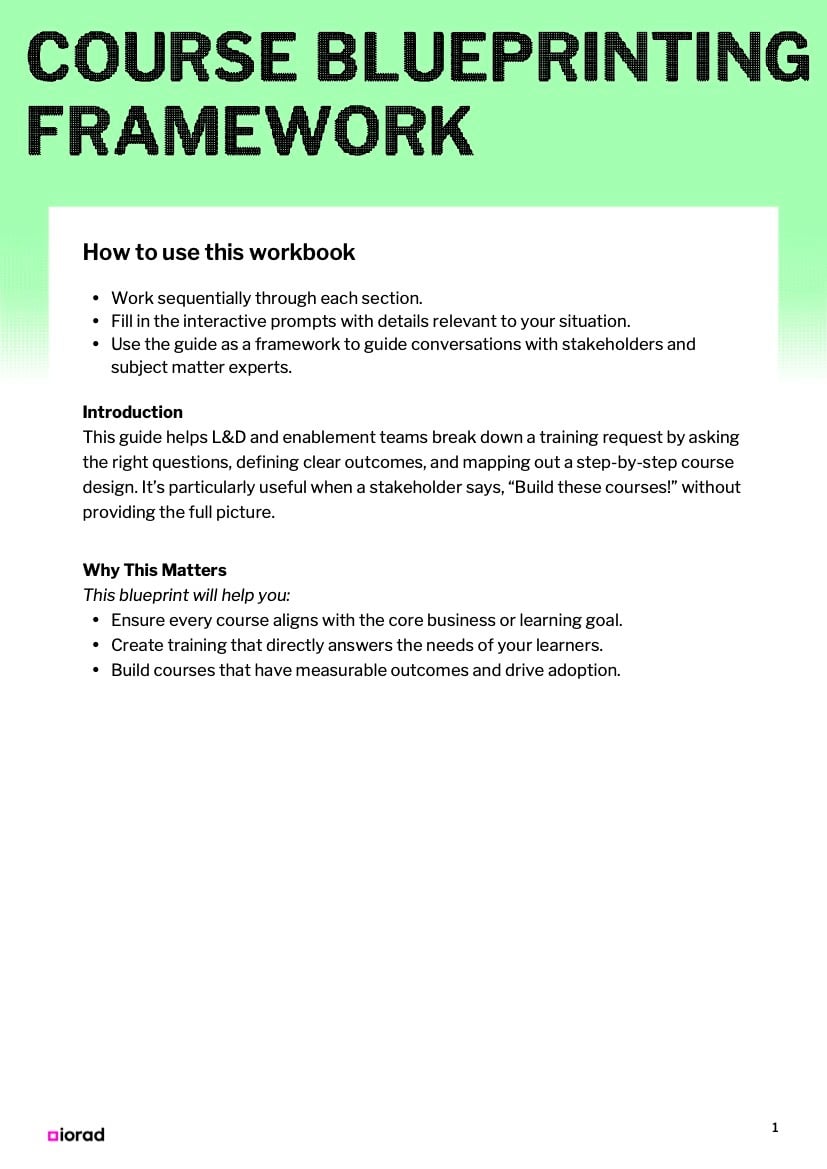
In this week's episode, we'll learn about proven frameworks, first principles learning, and multi-modal strategies that you can use to transform your organization's training and adoption outcomes.
Meet our Guest
William is a lifelong educator and self-proclaimed tech enthusiast, with a career spanning higher education, HR, compliance training, and now customer education.
His passion lies in designing impactful learning experiences for adults—especially in today’s fast-changing, AI-driven landscape. William is constantly exploring new methods to teach, assess, and scale knowledge in meaningful ways. Connect with him on LinkedIn or through the podcast to keep the conversation going.
How Simplicity Transforms Corporate Training
Background context: William has spent years witnessing the dissonance between high-tech training promises and the slow uptake in corporate environments. His journey began in the structured world of higher education before he pivoted to the fast-paced corporate arena. At Collibra, he faced a monumental challenge: reconciling flashy tech investments with the practical training needs that drive performance.
He discovered that a process-first approach isn’t merely an option—it’s essential. Instead of overwhelming users with complex systems, William emphasizes designing clear, concise workflows that empower teams to hit the ground running. As he often says,
🎤 "When you cut out the noise and stick to the essentials, training becomes a catalyst for real change.”- William Illingworth
Key Insight #1: Close the Gap
By directly addressing why tech investments aren’t translating to results, we can redesign training to deliver measurable outcomes.
• What I did: I rethought course development by challenging stakeholders to answer the “why” before deciding on content.
• Impact: This resulted in targeted, ROI-focused training programs that directly addressed business challenges.
🎤 "Before building a course, I ask: ‘What problem are we really solving?’ This simple question changes the game." - William Illingworth

Key Insight #2: Maximum Engagement
Simplicity isn’t dumb—it’s effective. I’ve embraced tools that let me focus on my subject matter expertise instead of getting bogged down by technical details.
• Practice: Leverage platforms that handle the heavy lifting (like IORAD) so you can concentrate on core instructional design.
• Results: This approach not only speeds up course creation but also boosts user engagement and adoption.
🎤 “I realized that by stripping away unnecessary complexity, we could create tutorials that are both clear and impactful." - William Illingworth

Key Insight #3: Future Proof
Look ahead: training should evolve with your business needs. An agile framework allows for continuous iteration and improvement.
• Strategy: Implement a modular approach where each training unit can be updated independently.
• Outcome: This keeps content relevant and ensures your team always has access to the latest best practices. "Agility in learning isn’t just about speed—it’s about responsiveness to change. That’s how you stay ahead."
🎤 "Agility in learning isn’t just about speed—it’s about responsiveness to change. That’s how you stay ahead." - William Illingworth

Free Adoption Template: Course Blueprinting Framework
The Problem: Struggling to move from broad mandates to targeted, impactful training? Many organizations jump into course creation without clarity, resulting in wasted time and resources.
The Solution: The Course Blueprinting Framework is a step-by-step guide to map out your learning initiatives—from understanding objectives to executing a scalable training module.
1. Define the Learning Outcome: Determine what success looks like.
2. Stakeholder Needs Assessment: Collect precise requirements and expectations.
3. Map the Course Blueprint: Outline a structured, modular approach.
4. Validate with Success Metrics: Set measurable KPIs to track progress.
5. Implementation Roadmap: Create clear timelines and assign responsibilities.
Why this works: 🎤 ""A well-defined blueprint transforms vague ideas into structured, actionable training that drives measurable ROI." – William Illingworth

Course Blueprinting Framework
Break down training requests by asking the right questions, defining clear outcomes, and mapping out a step-by-step course design.
Download